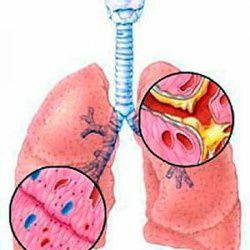How to treat the flu in a child?
 The flu belongs to the group of acute respiratory diseases( ARI) and is the most formidable of its representatives.People of any age are susceptible to this infection, but children are certainly more sensitive.The immune system in infants is imperfect.It is for this reason that the flu in children can be difficult and with the development of all sorts of complications.
The flu belongs to the group of acute respiratory diseases( ARI) and is the most formidable of its representatives.People of any age are susceptible to this infection, but children are certainly more sensitive.The immune system in infants is imperfect.It is for this reason that the flu in children can be difficult and with the development of all sorts of complications.
Causes of the disease
Influenza is an acute infectious respiratory disease caused by a virus from the family of orthomixoviruses. There are types of influenza :
- Type A;
- Type B;
- Type C.
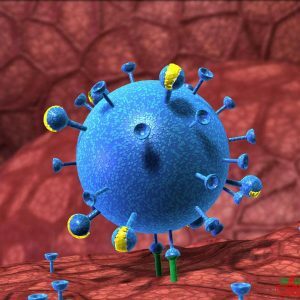 The most dangerous epidemic is the first type of influenza virus.On its surface are two antigen proteins - hemagglutinin( H) and neuraminidase( N).Hemagglutinin binds the virus to target cells, and neuraminidase destroys the cell membrane, so that the virus enters the body without obstruction.It is believed that the intoxication of the body is determined by the activity of hemagglutinin, but the inhibition of the immune system occurs under the influence of neuraminidase.Each of these antigens has its own subtypes.Thus, 12 subtypes of hemagglutinin, designated as H1, H2, H3, etc., are isolated, as well as 9 subtypes of the neuraminidase antigen - N1, N2, N3, etc.The combination of various types of antigens determines the type of influenza.So, H1N1 is called swine flu, and H5N1 is called bird flu.By and large, the clinical picture of influenza caused by different types of virus is the same.Swine influenza in children is a typical influenza infection.About what kinds of influenza will be spread in the northern hemisphere in 2015-2016, you can read in the article Influenza: symptoms, treatment, complications and prevention.
The most dangerous epidemic is the first type of influenza virus.On its surface are two antigen proteins - hemagglutinin( H) and neuraminidase( N).Hemagglutinin binds the virus to target cells, and neuraminidase destroys the cell membrane, so that the virus enters the body without obstruction.It is believed that the intoxication of the body is determined by the activity of hemagglutinin, but the inhibition of the immune system occurs under the influence of neuraminidase.Each of these antigens has its own subtypes.Thus, 12 subtypes of hemagglutinin, designated as H1, H2, H3, etc., are isolated, as well as 9 subtypes of the neuraminidase antigen - N1, N2, N3, etc.The combination of various types of antigens determines the type of influenza.So, H1N1 is called swine flu, and H5N1 is called bird flu.By and large, the clinical picture of influenza caused by different types of virus is the same.Swine influenza in children is a typical influenza infection.About what kinds of influenza will be spread in the northern hemisphere in 2015-2016, you can read in the article Influenza: symptoms, treatment, complications and prevention.
Symptoms of the flu
Transmission mechanism - airborne.A sick person, sneezing and coughing, along with saliva and sputum, secrete a virus.So, a healthy person in two or three meters can get influenza.The virus is attached to the epithelium of the nasal mucosa, larynx.From there it enters the bloodstream and then it spreads through the body.The incubation period is short, from several hours to three days.But on the average - one or two days. According to the severity of the flu, is released:
- Light course;
- Moderate;
- Heavy;
- Hypertensive.
Symptoms of influenza of medium severity
To determine by clinical picture what a child is sick with, influenza or other SARS in some cases is quite difficult.Indeed, for diseases from the ORZ group, there are similar symptoms.But for a flu( swine or any other), a common symptom is a sudden onset of the disease.Literally a few hours ago the child was active, agile, and now became listless, looks unhealthy.For a flu, a sudden increase in temperature to 38-40 degrees is typical, which keeps at such a high level for two to three days.The child complains of pressing pain in the eyes, headache, body aches.The sick kid becomes restless, whiny.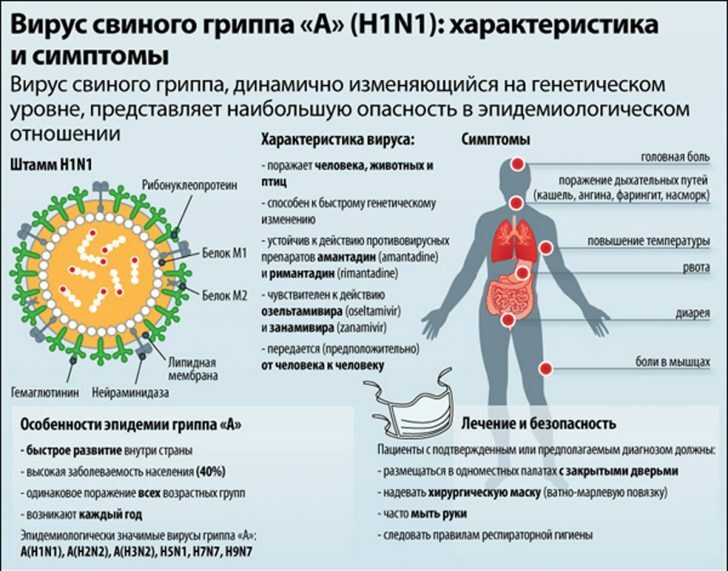 On the second day the child begins to complain of a sore throat, dry cough.There may be nasal congestion due to mucosal edema, then poor mucous membranes, clear discharge from the nose.But the abundant runny nose for the flu is uncharacteristic, this symptom may prompt the doctor to think about the presence of another infection - rhinovirus.There are deviations in the work of the cardiovascular system: fluctuations in blood pressure, as well as an increase in the rate of heart rate.Pain in the abdomen, as well as vomiting, diarrhea - these are the characteristic symptoms of swine flu in a child.The flu virus provokes fragility of blood vessels, therefore the baby can have spot hemorrhages on the body, as well as nosebleeds.Against the background of lowering the temperature, the child's condition gradually improves.But within 4-7 days still there can be a wet cough.Within a month after the illness, the child may experience a decrease in activity, rapid fatigue.At this time, you should limit active physical activity.
On the second day the child begins to complain of a sore throat, dry cough.There may be nasal congestion due to mucosal edema, then poor mucous membranes, clear discharge from the nose.But the abundant runny nose for the flu is uncharacteristic, this symptom may prompt the doctor to think about the presence of another infection - rhinovirus.There are deviations in the work of the cardiovascular system: fluctuations in blood pressure, as well as an increase in the rate of heart rate.Pain in the abdomen, as well as vomiting, diarrhea - these are the characteristic symptoms of swine flu in a child.The flu virus provokes fragility of blood vessels, therefore the baby can have spot hemorrhages on the body, as well as nosebleeds.Against the background of lowering the temperature, the child's condition gradually improves.But within 4-7 days still there can be a wet cough.Within a month after the illness, the child may experience a decrease in activity, rapid fatigue.At this time, you should limit active physical activity.
Symptoms in severe
The clinical picture shows symptoms of intoxication.Due to the high temperature of the baby, delusions, hallucinations, hemorrhagic phenomena( bleeding from the nose, gums, subcutaneous hemorrhages) can occur.The temperature quickly reaches 39-40 degrees and is kept for a long time at a high level. In young children, neurotoxicosis develops, manifested by :
- Headache;
- Nausea, vomiting;
- Symptoms of meningism;
- Seizures.
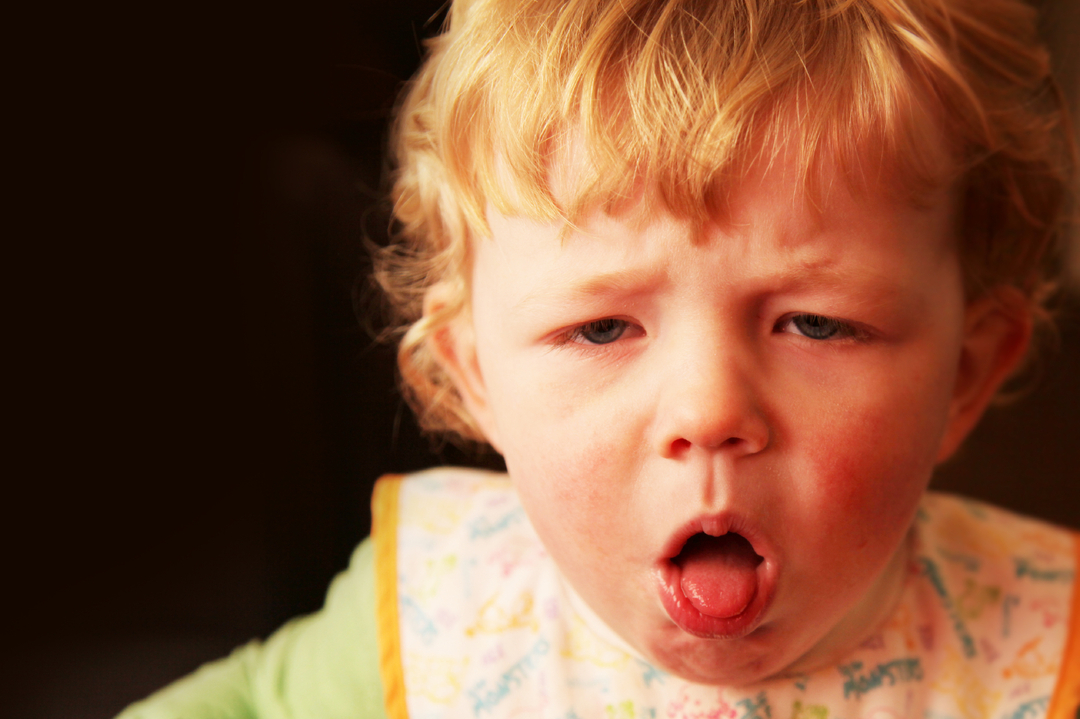 In severe infection, various complications are often associated, for example, hemorrhagic pulmonary edema.The most dangerous for children hypertoxic form of the disease, which is characterized by extremely severe course and rapid development of such a formidable condition as an infectious-toxic shock.Often with this form of the disease, the catarrhal symptoms of influenza in a child do not even have time to form( stuffiness in the nose, cough).Hypertensive form of influenza can lead to death due to pulmonary edema or acute cardiovascular insufficiency.Death can come only after a few hours after the onset of the first symptoms.
In severe infection, various complications are often associated, for example, hemorrhagic pulmonary edema.The most dangerous for children hypertoxic form of the disease, which is characterized by extremely severe course and rapid development of such a formidable condition as an infectious-toxic shock.Often with this form of the disease, the catarrhal symptoms of influenza in a child do not even have time to form( stuffiness in the nose, cough).Hypertensive form of influenza can lead to death due to pulmonary edema or acute cardiovascular insufficiency.Death can come only after a few hours after the onset of the first symptoms.
Complications of the disease
Complications for influenza can be divided into two groups:
- Primary - caused by the influenza virus;
- Secondary - caused by a secondary infection.
Primary complications
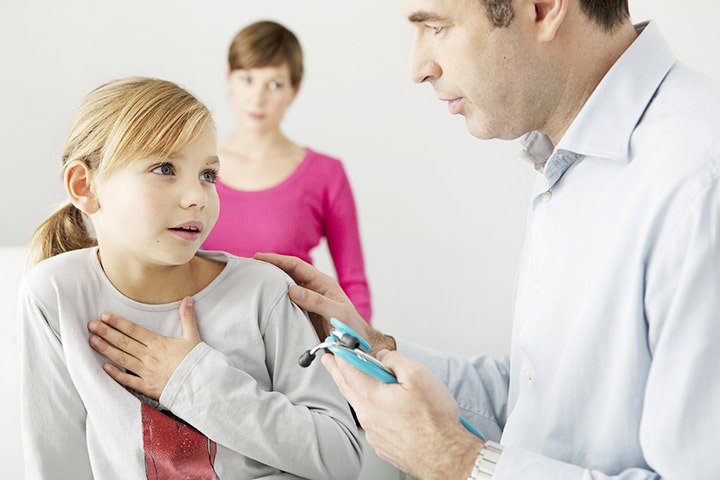 The most formidable complication of this group is considered to be hemorrhagic pulmonary edema that occurs in the early days of the disease and can lead to death.Against the backdrop of severe toxicosis, dyspnea, sputum with blood, skin bluish, and heart rate increase.Due to severe respiratory failure, death develops.Children may also experience a false groin caused by swelling of the vocal cords and spasm of the muscles of the larynx.This condition is characterized by the appearance of an attack of suffocation, more often at night.The attack is accompanied by an increase in heart rate, a child's anxiety.Progressing edema of the larynx leads to the fact that air does not enter the lungs and the baby starts to choke.The action of the influenza virus is particularly sensitive to the nervous system. Possible development of such complications:
The most formidable complication of this group is considered to be hemorrhagic pulmonary edema that occurs in the early days of the disease and can lead to death.Against the backdrop of severe toxicosis, dyspnea, sputum with blood, skin bluish, and heart rate increase.Due to severe respiratory failure, death develops.Children may also experience a false groin caused by swelling of the vocal cords and spasm of the muscles of the larynx.This condition is characterized by the appearance of an attack of suffocation, more often at night.The attack is accompanied by an increase in heart rate, a child's anxiety.Progressing edema of the larynx leads to the fact that air does not enter the lungs and the baby starts to choke.The action of the influenza virus is particularly sensitive to the nervous system. Possible development of such complications:
- Arachnoiditis;
- Edema and wedging of the brain into the large occipital foramen;
- Hemorrhages in the brain with the development of paralysis;
- Guillain-Barre Syndrome;
- Neuralgia, polyneuritis;
- Syndrome of Ray.
Note : Reye's syndrome develops on the background of treatment with influenza aspirin.This medication should be avoided.The syndrome is characterized by severe damage to the brain and liver. In the delayed term( after 1-2 months), the development of such a complication as glomerulonephritis is possible.This disease is manifested by a decrease in urine output, edema, increased blood pressure.It is also possible to defeat the heart with the development of myocarditis or endocarditis.
Secondary complications
In most cases, the flu ends with a complete recovery of the child.Dangers should not be expected from the flu itself, but rather from complications.Secondary complications arise when a second infection( more often bacterial) is attached to the flu, or foci of chronic infection are activated.The most common and dangerous complication of influenza is bacterial pneumonia.The presence of the disease will be indicated by an increase in body temperature above 38 degrees after the fifth day of the illness, a marked weakness, a wet cough with purulent sputum.The child coughs with his hands presses on the chest, because he feels pain in this part of the body.Another category of secondary complications in influenza is the diseases of the ENT organs. Most often develop such diseases as:
- Otitis;
- Sinusitis;
- Pharyngitis.
Diagnosis of influenza
A child who has an appointment with a pediatrician will be required to conduct a clinical blood test. What changes will be in the analysis?
-
 Reducing the number of leukocytes;
Reducing the number of leukocytes; - Acceleration of ESR;
- Decreased amount of neutrophils;
- Decreased number of lymphocytes.
But this method of investigation is not specific.The changes described above indicate the presence of a viral infection, but do not provide information about the pathogen.Specific diagnostics makes it possible to identify the influenza virus.The patient takes smears from the nose, and then the selected material is applied to the slide.The resulting preparation is treated with a fluorescent dye, and then examined under a luminescent microscope.This method of diagnosis was called the method of fluorescent antibodies( MFA).Also in the diagnosis of influenza, the PCR method is used, which allows you to determine in the smears from the nose of the RNA virus.Thanks to such modern methods of diagnosis, it is possible to confirm or deny the diagnosis of influenza on the same day that the material for the study was selected.
Treatment
Recommended to read:  Uncomplicated influenza does not require any active measures.It is enough to provide the child with bed rest.Treatment of influenza in children at home should be carried out while observing sanitary recommendations.The child's room should be ventilated several times a day, wet cleaning should be carried out in it.At children during illness the appetite is lost.Do not force a child to eat by force.It is necessary to give preference to light dishes, for example, low-fat chicken soup, eggs, dairy products.The most important rule is a copious drink.It can be fruit drinks, natural juices, compotes.Such drinks not only contribute to the elimination of the virus, but also saturate the body of the child with vitamins and microelements.Of the symptomatic treatment, antipyretics, nasal sprays, cough drops, and less expectorants are used.Separately it is necessary to talk about the use of antipyretics.Of the variety of NSAIDs, only two drugs are recommended for children: ibuprofen and paracetamol.It is known that an increase in temperature is a protective reaction of the body.Thus, the body struggles with infection and to knock down the 38-degree temperature is not worth it.But there are certain situations when it is not only possible to lower the temperature, but it is also necessary. Antipyretic drugs should be prescribed with :
Uncomplicated influenza does not require any active measures.It is enough to provide the child with bed rest.Treatment of influenza in children at home should be carried out while observing sanitary recommendations.The child's room should be ventilated several times a day, wet cleaning should be carried out in it.At children during illness the appetite is lost.Do not force a child to eat by force.It is necessary to give preference to light dishes, for example, low-fat chicken soup, eggs, dairy products.The most important rule is a copious drink.It can be fruit drinks, natural juices, compotes.Such drinks not only contribute to the elimination of the virus, but also saturate the body of the child with vitamins and microelements.Of the symptomatic treatment, antipyretics, nasal sprays, cough drops, and less expectorants are used.Separately it is necessary to talk about the use of antipyretics.Of the variety of NSAIDs, only two drugs are recommended for children: ibuprofen and paracetamol.It is known that an increase in temperature is a protective reaction of the body.Thus, the body struggles with infection and to knock down the 38-degree temperature is not worth it.But there are certain situations when it is not only possible to lower the temperature, but it is also necessary. Antipyretic drugs should be prescribed with :
- Body temperature over 39 degrees;
- Temperature above 38 degrees if a history of the child has seizures;
- Temperature above 38.5 degrees with chronic diseases;
- Temperature above 38 degrees in babies.
Influenza is the only infection from the ARD group against which there is etiotropic treatment. Drugs that are effective against influenza are divided into two groups:
- M2 receptor inhibitors - remantadine;
- Neuraminidase inhibitors - Tamiflu, zanamivir.
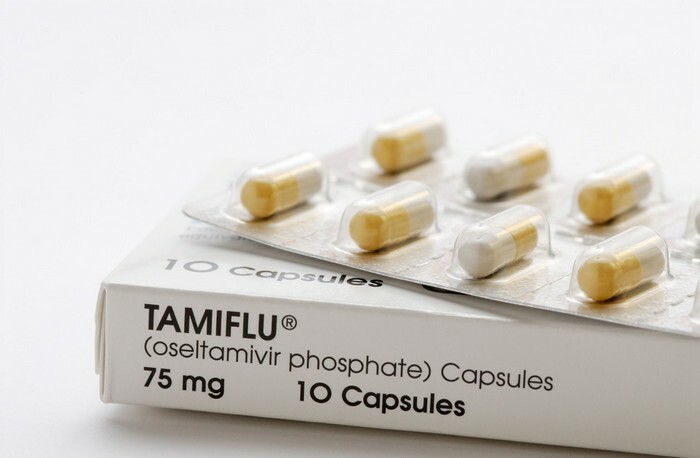 These drugs are prescribed in a hospital under the supervision of a physician.This is a very important condition, because despite their effectiveness, they also have serious side effects.Drugs should be taken as early as the first day of the disease.Please note: Should be very careful about the methods of traditional medicine.Some of them will prove to be simply ineffective, while others are absolutely life threatening.So, do not rub the child with alcohol, wrap it in warm blankets.These manipulations can lead to overheating of the child, disruption of thermoregulatory mechanisms.Unfortunately, in their clinical practice, doctors face similar situations when a child dies because of similar, seemingly innocuous manipulations.
These drugs are prescribed in a hospital under the supervision of a physician.This is a very important condition, because despite their effectiveness, they also have serious side effects.Drugs should be taken as early as the first day of the disease.Please note: Should be very careful about the methods of traditional medicine.Some of them will prove to be simply ineffective, while others are absolutely life threatening.So, do not rub the child with alcohol, wrap it in warm blankets.These manipulations can lead to overheating of the child, disruption of thermoregulatory mechanisms.Unfortunately, in their clinical practice, doctors face similar situations when a child dies because of similar, seemingly innocuous manipulations.
Prevention
Preventive measures can be divided into specific and nonspecific.Nonspecific prevention of influenza in children includes adequate nutrition and sleep, walking on the street, moderate physical activity, avoidance of places of large concentrations of people.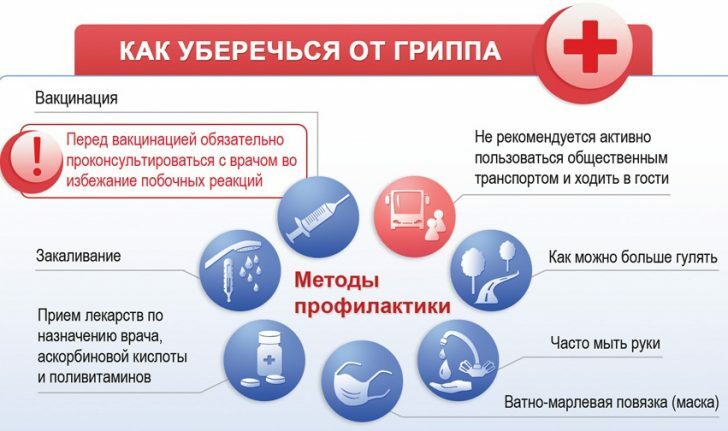 Specific prevention is vaccination. Vaccines are:
Specific prevention is vaccination. Vaccines are:
- Inactivated;
- Alive.
Doctors recommend not neglecting vaccination in children, as influenza in childhood can be very difficult and it is better to avoid it.Vaccination should be done before the epidemic season begins - in September and early October.But if the child for some reason was not vaccinated during this period, you can get vaccinated during the epidemic.The most important condition is that the child should be healthy.The presence of a cold and cough are contraindications for the administration of the vaccine. Grigorova Valeria, medical reviewer



